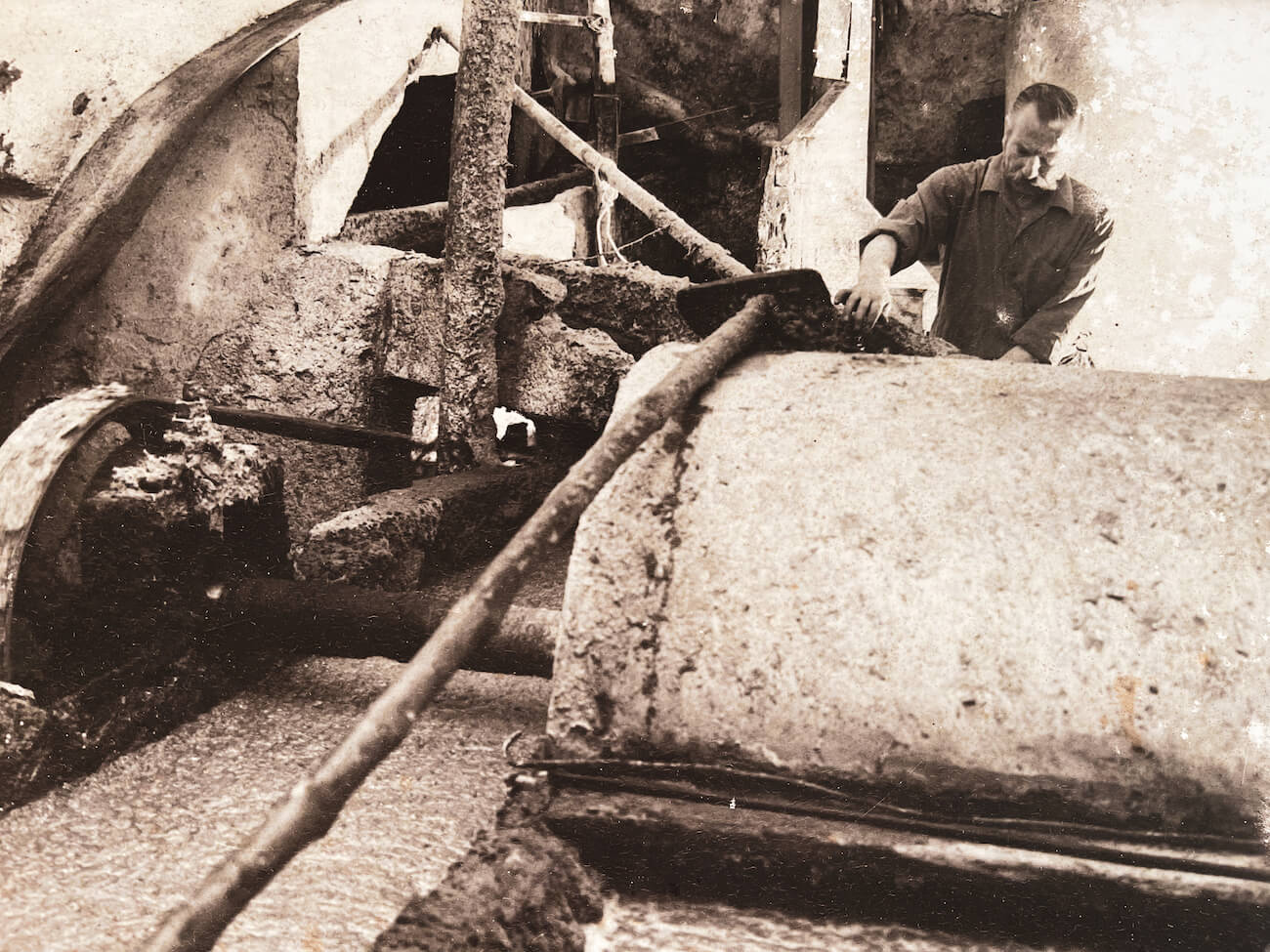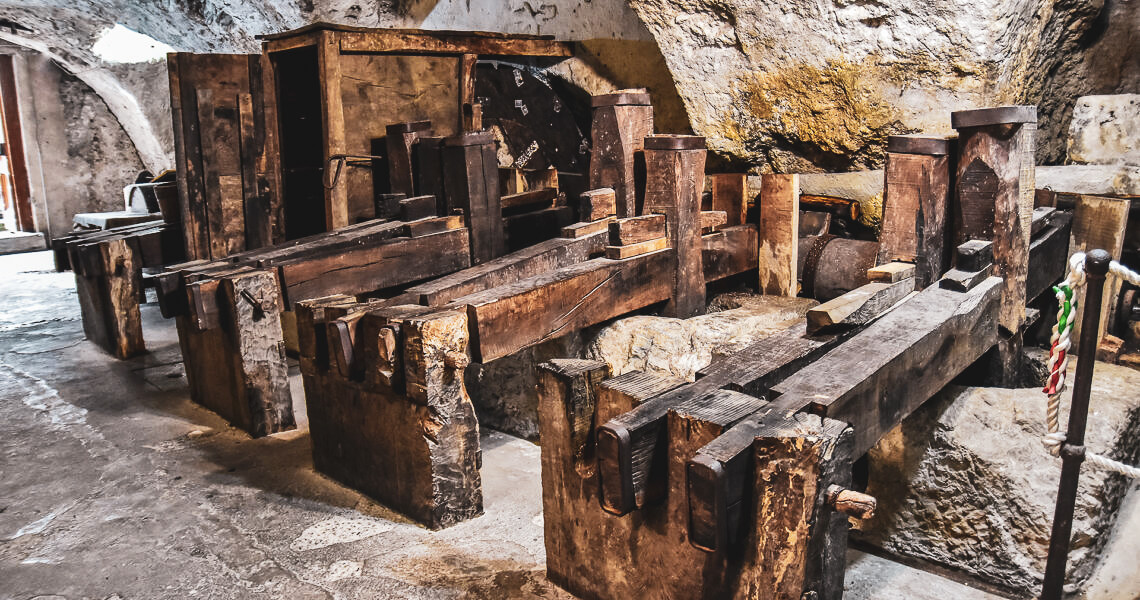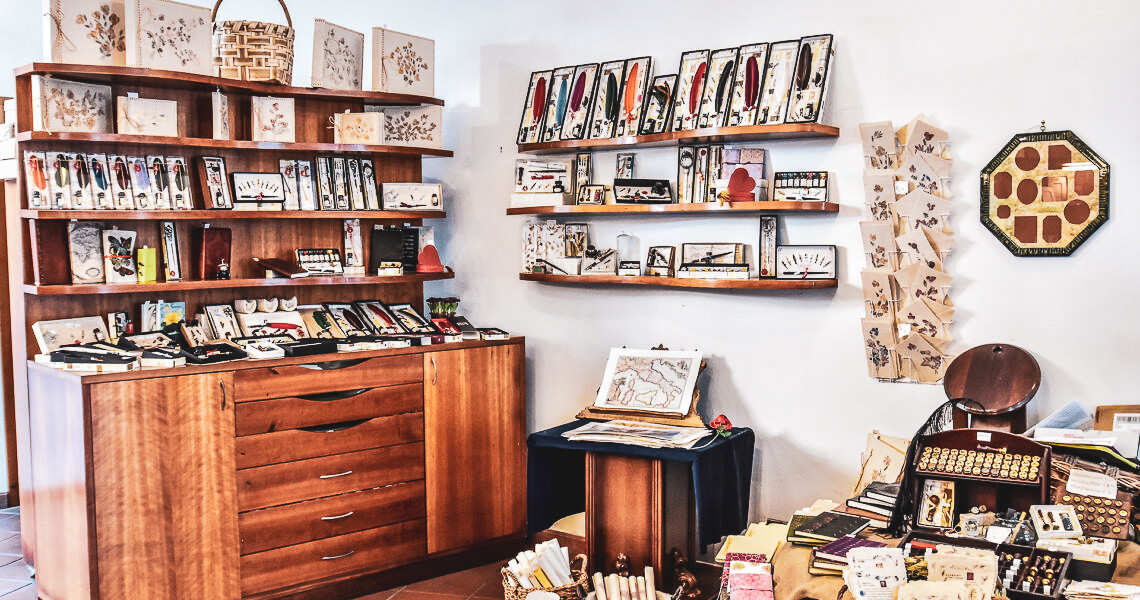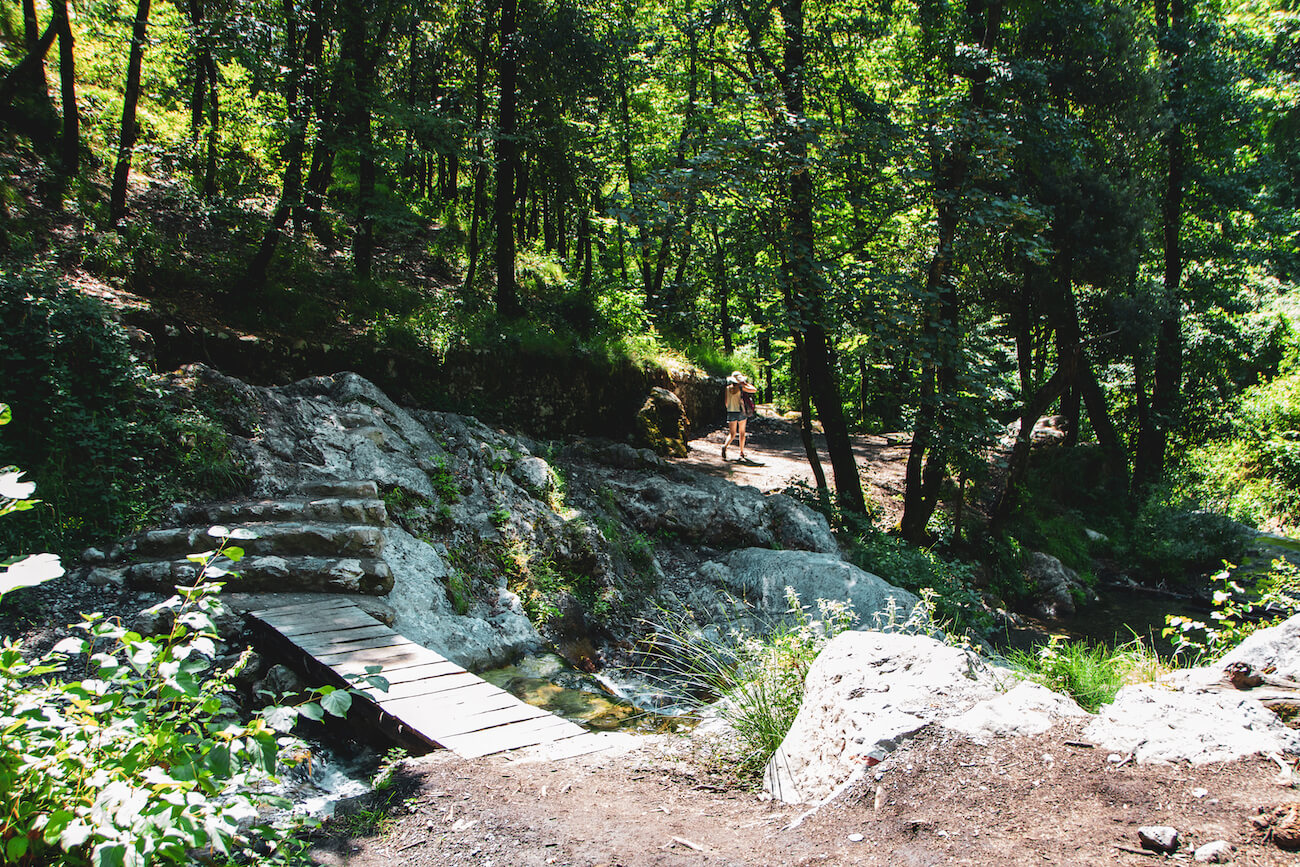The beautifully winding Amalfi Coast is on the wish list of many sea travelers – and rightly so. The small town of Amalfi in particular is an irresistible attraction for sailors and cruise tourists. Somewhat hidden from the hustle and bustle of the tourist streets is an insider tip: the paper museum located in a former paper mill. Amalfi has a rich history of producing the best paper in the world. Even today, the Pope still holds sheets of paper from this place in his hands for documents.
It’s quiet down here. A few spiders quickly crawl into the cracks in the old walls as we enter. On this hot summer’s day, the coolness of the catacombs is a relief for us. All around us are old machines made of wood and heavy stone that made their last rounds several decades ago. For many years, paper production around Amalfi was a flourishing craft, characterized by prestige, wealth and incomparable skill. For a few moments, our visit to the “Museo della Carta” gives us a glimpse of this old paper-making era. You can almost hear the lazy hammering of the striking pins and the splashing of the mill wheels.

Paper museum “Museo della Carta” – a piece of ancient cultural history
The catacombs in which we find ourselves are just a few hundred meters from the center of Amalfi. At the very end of the main street Via Lorenzo d’Amalfi, past shops and the last hotels, the inconspicuous building from the 13th century nestles against the rock on the left. Anyone with a penchant for cultural history in addition to the cathedral, the famous beaches and narrow alleyways should plan an extra hour for the museum. After all, paper production is a link to times long past as a powerful maritime republic. After all, Amalfi was the hub of Italy for over 200 years thanks to its close ties with Byzantium. These trade connections brought the craft of paper production to the coastal region at an early stage. In its heyday, over 60 paper mills were located in the government area. The precious commodity was distributed from there throughout Western Europe from the 12th century onwards.

Upcycling in the 12th century – from rags to luxury goods
During the guided tour through the stone walls, we are particularly amazed at the ingenuity of the old paper manufacturers. Instead of sourcing expensive cotton from faraway countries, the Amalfitans used old rags and scraps of clothing to make paper. A whole professional group formed in the area, collecting scraps of cotton, linen, hemp and jute from everywhere and selling them to the mills. As the old clothing did not contain any modern fibers such as nylon or polyester, the organic base was ideal for paper production.

These were shredded until they became the typical fiber pulp.

Many different shredding techniques were used to get to grips with the materials in the mills. The resulting pulp was perfect for the typical Amalfi paper. From a waste product to a luxury good for scholars, clerics and the rich – an extremely clever idea from a financial point of view. Paper from Amalfi was therefore much cheaper than papyrus and tanned animal skins.
It was not until around 1800 that paper producers switched to the even cheaper cellulose. Until then, paper production was indeed an example of upcycling par excellence.

Each sheet was strenuous manual work
During the tour of the museum, you get a very good impression of the many work steps that a single sheet of paper required. First of all, all buttons, nails and embroidery had to be removed by hand from the clothing remnants. The remaining fabrics had to be brightened again and again. To finally go through umpteen stages of processing.


The expensive paper was therefore only available to wealthy citizens.
In the cellar, you can still see the original wooden hammers that were used for crushing in the beginning. The other machines that have made processing easier over the centuries are also on display, true to the originals. The “Papierholländer” slowly starts to move as our guide opens the water lock. This invention must have been a boon for the papermakers. Sharp blades shredded the rags much faster and more cheaply.


Paper making for visitors to join in
A nice highlight of the museum is the basin into which we are allowed to dip deep and can now scoop “our” paper out of the pulp. Theoretically, we could collect these sheets after a few weeks of drying. However, it is questionable whether it would actually be possible to write on our holey specimens. We have probably not lost any talented paper artists. We prefer to pick up professional copies at the exit of the store. These are made in the only remaining paper mill in town, the “Cartiera F. Amatruda”, just a few meters behind the museum.

The two parts are connected so that the fibers can be scooped out of the water.







The paper of the popes
Paper production in Amalfi was an absolute success in its heyday. Thanks to the watermarks, there is evidence that the oldest documents on Amalfi paper were created around the early 12th century. Only nobles, rich merchants and clergymen from the Vatican could afford the high-quality material. This quality ensured the survival of the paper mills even after the political downfall of the Maritime Republic. It was only with industrial production that the importance for the wholesale trade continued to decline.


A very few paper mills have been able to preserve their craft. Customers still treat themselves to the typical paper for special occasions and documents. Even though modern production methods are now used, its properties are still highly valued. Artists use it for drawings, bridal couples for special wedding invitations. And the Vatican State still uses the paper of the popes for its correspondence. A small notebook goes into our bag as a souvenir – who knows what important travel notes we will leave on it.




Valley of the Mills – Valle dei Mullini
If you have time, you can follow the road further uphill after the visit. The cliffs rise up steeply and narrow the road more and more. Now the industrial area of ancient Amalfi begins, so to speak. The Canneto river, which meanders between the cliffs, was home to numerous family-run paper mills. The river was the lifeline for the paper millers, as the purity of the water was crucial for the high quality of the finished product.


Nowadays, the Valley of the Mills is a wonderful place to hike and relax. Every now and then you can still see the abandoned ruins of the old mills, which lend the place a mystical air. The water ripples gently, the trees provide shade and the paths are well marked. Unfortunately, we don’t have much time to explore the valley as we have to return to our boat. An extended exploration is definitely on our wish list for the next trip to the Amalfi Coast.


This program item is on our wish list for the next visit.
Arrival from the port
Large ships dock in Naples and offer mini-bus tours to Amalfi. Smaller ships and sailing boats can dock directly in the harbor or drop anchor. The area around the harbor and the beach is also a bus parking area and starting point for sightseeing in Amalfi and the route to the museum. The Paper Museum is well signposted and can be reached on foot within 15 minutes from the cathedral square. Admission costs a few euros and a guided tour is compulsory. Tours are available in various languages, including German.
Photo sources: Cover picture @Museo della Carta | Featured image 1 lindasky76/ Shutterstock.com | Featured images 4 + 7 + 8 + 10 + 11 + 12 + 13 + 19 +23 @Museo della Carta | Featured image 26 Kalina Georgieva/ Shutterstock.com | Featured image 27 auralaura/ Shutterstock.com

